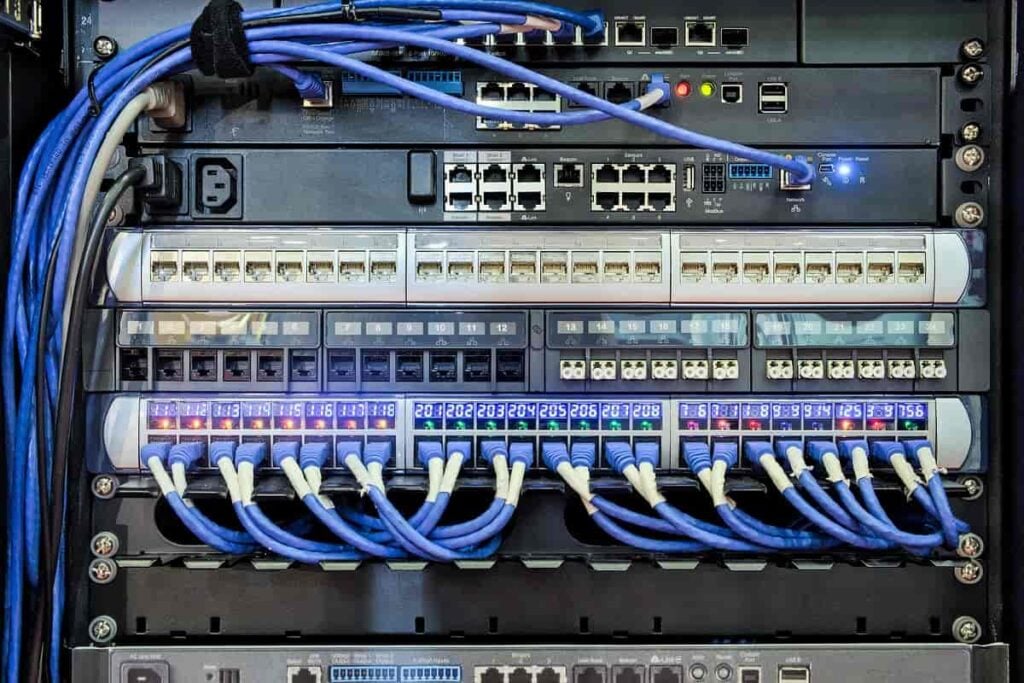The World’s Largest Database Using Ambient Intelligence
Table of contents

There is a term that we often use at Nanalyze to describe how our online activities leave behind a breadcrumb trail that companies use to track our behavior: data exhaust. It refers not only to every mouse click or swipe left on our devices but where we go and when, not to mention every social media post about our AI-powered vacations. Companies usually vacuum up this data exhaust to fuel retail analytics that can be used to automate retail store operations or even to prevent shoplifting. Or such data can be used for surveillance, such as the case of Dataminr, a startup that mines Twitter feeds using algorithms. More recently, we covered San Francisco startup Geoquant, which uses big data to assess geopolitical risk. Now we’ve come across a startup, Near, which claims to have built the world’s largest database of human behavior based on what it calls ambient intelligence.
The World’s Largest Database of Human Behavior

No doubt Jim – as well as marquee clients like Mastercard (MA), The We Company (formerly WeWork), and MetLife (MET), among others – is interested in Near’s global marketing database that reportedly stands at 1.6 billion unique profiles across more than 40 countries. (Facebook claims about 2.4 billion active monthly users, for comparison.) Near calls its platform Allspark. It leverages location data from mobile and WiFi carriers, data brokers that aggregate app activity, millions of smart devices, and even your Uncle Joe in order to ingest billions of real-world signals. Its machine learning algorithms are then able to build individual profiles that companies can use for marketing campaigns or to somehow enrich the customer experience using these alternative datasets:

The real trick is that the whole operation happens in what Near refers to as a privacy-led environment that meets current privacy laws. In other words, everyone remains anonymous while still receiving personalized spam recommendations or other services from Near’s growing client list.
Ambient Intelligence and Human Behavior
Near refers to Allspark as its ambient intelligence platform. Ambient intelligence is basically the marriage of AI, big data and the Internet of Things, in which we live in an environment where our technology understands and responds to us in a highly individualized manner. The concept was actually first floated in the late 1990s by a venture capitalist named Eli Zelkha and his team at Palo Alto Ventures, which predicted that our devices would eventually merge into the everyday background of our lives, responding to our needs effortlessly and flawlessly. You’ll be relieved to learn that should all happen by next year, according to their original prediction.
The technology developed by Near is only one aspect of realizing this ever-present ambient intelligence that watches, learns, and responds. For example, an AI startup that we’ve covered before called Affectiva is developing algorithms to recognize human emotion. Further advances in computer vision will be key, as machines will particularly rely on visual cues to analyze and understand human behavior. All of this may eventually lead to some version of what is called artificial general intelligence, when machines can match or even exceed humans in thought and ability before enslaving us while serving our every whim. Or, at the very least, Siri should be able to come up with the right answer once in a while.
Case Studies Using the World’s Largest Database of Human Behavior
Near believes its Allspark platform can provide solutions to multiple marketing challenges. Let’s look at a couple of real-world case studies:
- Near was hired by Virgin Active, a chain of health clubs nominally part of the Virgin Group brand, to help boost membership. Near created a database of Virgin Active’s target audience in Allspark using multiple data sets as part of a two-phase ad campaign. Those users were then targeted with dynamic mobile ads when they were within close proximity to a Virgin Active Health Club. After crunching the numbers, Near said walk-ins increased by 70% in the first phase, which further increased to 82% in the second phase as it refined its target audience, a group that apparently frequented cinemas and theatres, and enjoyed long walks on the beach. (We might have made up that last one.) At the same time, the average cost per walk-in dropped by 62%.

- For a quick-service restaurant chain in Thailand, Near used Allspark to create a target audience of 18- to 45-year-olds who had been spotted in or around the client’s or competitors’ stores over a 30-day period to promote a new dish. Near then targeted the audience segment in addition to the users seen in and around its client’s eight stores in real-time to drive walk-ins, which increased by 65% during the campaign. The promotion also revealed a few other tidbits, such as a higher number of women (66%) walked into the stores to try the new dish.
Competition in Location Data Marketing
While Near has amassed an impressive war chest – and could someday soon join the unicorn club of startups valued at $1 billion or more – it’s not the only company using AI and big data to build customized databases of customers. Let’s take a look at some of the more prominent competitors using location data to help boost marketing and support business decisions.



In partnership with Braze, a mobile marketing software company, PlaceIQ used its location-based audience and insights platform to target customers through a mobile messaging campaign for Urban Outfitters. The results: The retailer boosted conversions from its promotional outreach by 75% and increased related revenue by 146%, compared to messages based on customers’ expressed interests. In other words, we don’t know what we want until we want it.



Perhaps the most important from Lifesight: Pizza Hut controls the major market share in terms of footfalls among KFC’s main competitors. Coming soon to your neighborhood KFC: chicken-fried pizza. Now that’s technological progress.
Conclusion
There’s no getting away from the fact that location data is becoming big business thanks to big data and the computing power of AI. The five companies we’ve profiled here have already raised more than $300 million, and this list is by no means comprehensive. Near is the obvious leader of the pack, not just because it has amassed more money but because it has built the world’s largest database of human behavior – all while reportedly protecting privacy. Maybe a certain social network should take notes – or even consider a strategic acquisition.
Sign up to our newsletter to get more of our great research delivered straight to your inbox!
Nanalyze Weekly includes useful insights written by our team of underpaid MBAs, research on new disruptive technology stocks flying under the radar, and summaries of our recent research. Always 100% free.














